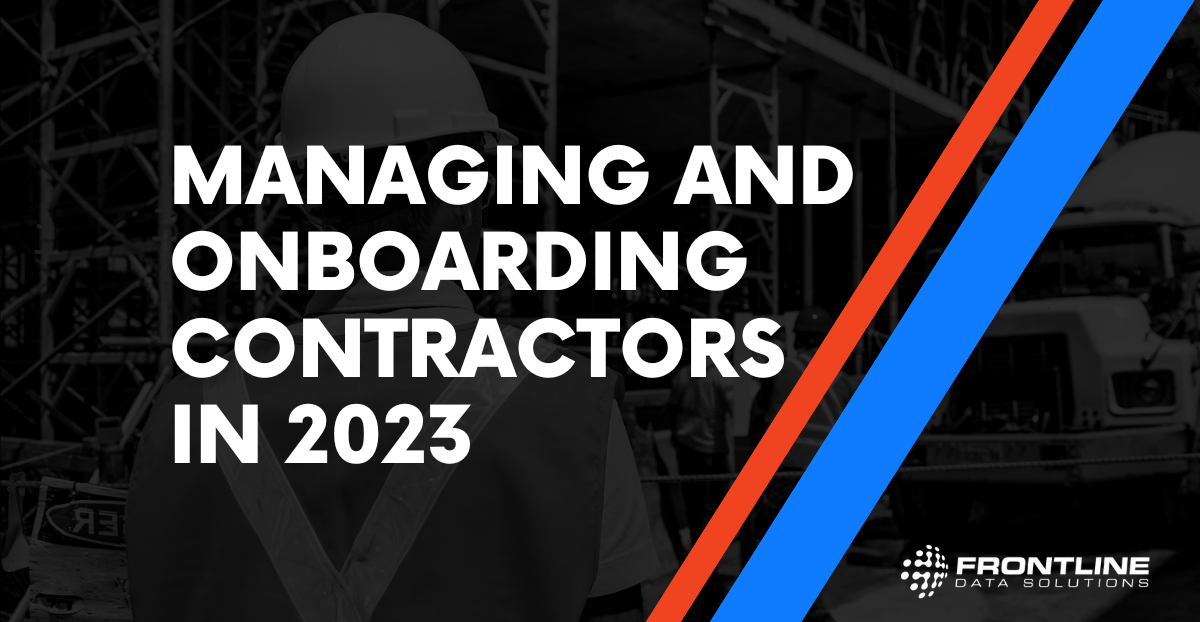
On July 20th, Frontline is hosting a half-day virtual event on Managing and Onboarding Contractors in 2023. Let’s talk a little bit about why the event is important and why you shouldn’t miss it!
Undoubtedly, proper contractor management and onboarding are critical aspects of occupational health and safety. But among all the daily tasks, administrative work, safety walks, and risk mitigation, it’s one of the first and easiest things to get overlooked.
Your seasonal and temp workers or third parties are not familiar with site-specific hazards and safety protocols, and this lack of familiarity increases the likelihood of accidents, injuries, and fatalities. This becomes especially concerning when contractors perform high-risk tasks or work in hazardous environments.
Effective contractor management and safety practices can help reduce these risks associated with contractor work. So, what does effective contractor management look like?
When we review the industry, there’s no certain way of managing and onboarding contractors. In some businesses, HR oversees them. For some, it’s the EHS or safety department, and for others, it’s procurement, operations, or project managers. We’ve even heard “the security person at the door” here and there. Then, there’s the problem of verification and training. “How do I know that the person who showed up is who they say they are?” or – “How do I verify that their training is completed or isn’t expired?” and “What happens if they show up on-site and their training isn’t completed?”
Don’t even get us started about site-specific training and protocols.
Seeing these gaps and disorder in the industry pushed us to look for solutions as to how businesses can better manage and onboard their contractors.
That’s why we’re bringing our industry research together with safety experts, thought leaders, and experienced OHS professionals. Let’s find out what effective contractor management and onboarding look like together!
We know that by working collaboratively and efficiently with contractors, employers can create an environment that fosters a safety culture.
Not to mention the fact that investing in contractor safety is an ethical imperative and makes good business sense. Accidents and injuries can lead to costly delays, increased premiums, and reputational damage. By prioritizing contractor safety, organizations can protect their workers, reduce the risk of legal and financial liabilities, and promote a safer workplace for everyone involved.



